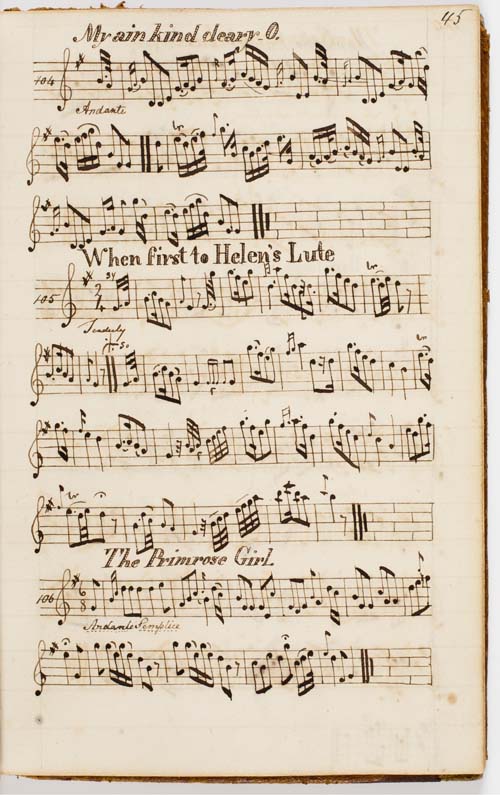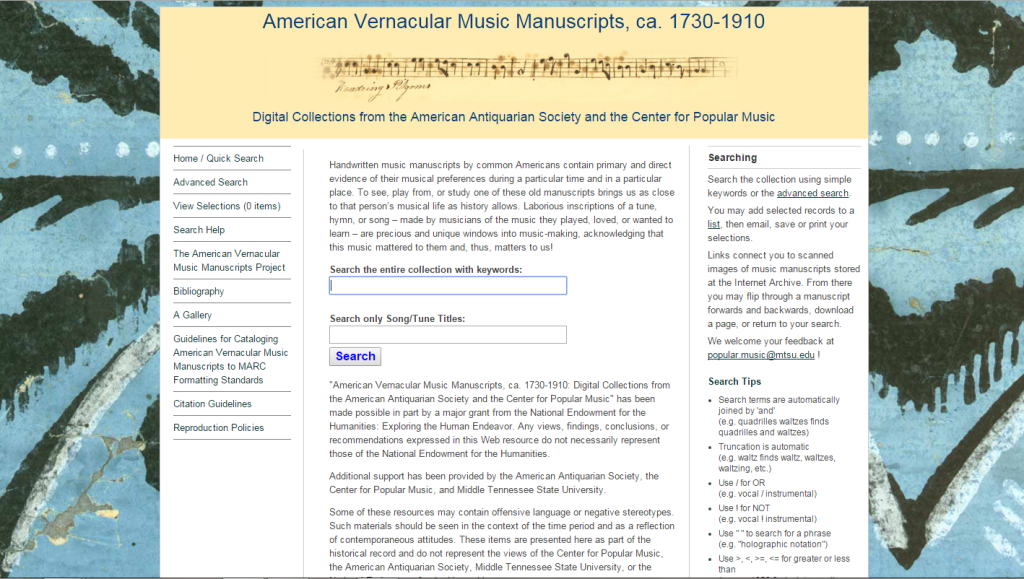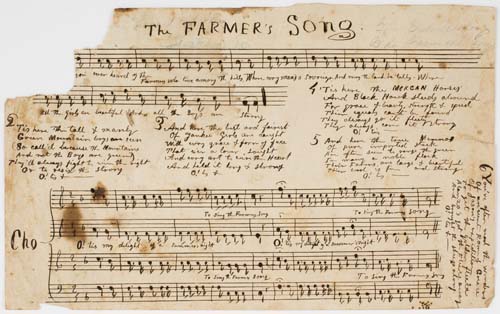
By the mid-eighteenth century, a common rite of passage for many young people in Colonial America was to attend a local singing school conducted by some itinerant music-master. There they learned the names of the notes, time signatures, rudimentary music theory, and how to sing harmony in four parts. For the young, singing schools were fun!—Singing itself was a joy and achieving some mastery over the notes deeply satisfying. And it didn’t hurt that for the tenors and basses at the school there would generally be an equal number of sopranos and altos (and vice versa)! Indeed, one wan Yalie from that time wrote a friend that: “At present, I have no Inclination for anything, for I am almost sick of the World & were it not for the Hopes of going to singing-meeting tonight & indulging myself a little in some of the carnal Delights of the Flesh, such as kissing, squeezing &c. &c. I should willingly leave it now.” Whatever the reasons—musical, intellectual, or carnal—singing schools flourished well into the twentieth century.
Teach a person to read and they will want to write, a maxim as true for notes as it is for words. And sure enough, whereas only a bare fistful of compositions by Americans existed in 1730, by 1810 there were more than 5,000[1], and by 1900 millions. One result of learning to read music and then to write it was that ordinary people soon bought or fashioned copybooks and inscribed in them the songs, hymns, and tunes that mattered to them, music they had composed, performed, heard, or wanted to learn. Hundreds of such books survive today in collections that range from the solitary manuscript held in some local historical society to the 223 in the collections of the American Antiquarian Society. These manuscripts contain prima facie evidence of musical taste and usage during a particular time and in a particular place, and serve a scholarly function quite distinct from printed music, which typically documents only accessibility.
 In 2012, the National Endowment for the Humanities, under the provisions of the “Humanities Collections and Reference Resources” program, awarded a major grant to the Center for Popular Music (CPM) at Middle Tennessee State University to develop a collaborative project with AAS that would: a) catalog their collective music manuscripts at the song-title level; b) digitize all materials to archival standards; c) build the “American Vernacular Music Manuscripts, ca. 1730-1910” website, d) provide full and free web-based public access to the results; and e) develop guidelines that would allow other archival institutions to make their manuscripts available and accessible. The CPM and the AAS were natural partners in this enterprise, for the AAS collections were strong in the earlier period and in sacred music, while the CPM collections better documented secular music and the period to 1910 (about when the act of writing music succumbed to the inexpensive ubiquity of printed music). Furthermore, while AAS had more manuscripts, the Center had the cataloging expertise to deal with the myriad and manifold questions on detailed music matters.
In 2012, the National Endowment for the Humanities, under the provisions of the “Humanities Collections and Reference Resources” program, awarded a major grant to the Center for Popular Music (CPM) at Middle Tennessee State University to develop a collaborative project with AAS that would: a) catalog their collective music manuscripts at the song-title level; b) digitize all materials to archival standards; c) build the “American Vernacular Music Manuscripts, ca. 1730-1910” website, d) provide full and free web-based public access to the results; and e) develop guidelines that would allow other archival institutions to make their manuscripts available and accessible. The CPM and the AAS were natural partners in this enterprise, for the AAS collections were strong in the earlier period and in sacred music, while the CPM collections better documented secular music and the period to 1910 (about when the act of writing music succumbed to the inexpensive ubiquity of printed music). Furthermore, while AAS had more manuscripts, the Center had the cataloging expertise to deal with the myriad and manifold questions on detailed music matters.

The project took more than two years to complete, but the end results warranted the work. Staff from both institutions processed and digitized 351 manuscripts, which resulted in 17,230 images of inscribed pages found in commonplace books, copybooks, and on single and double leaves. Approximately 17,000 tunes, hymns, songs, ballads, and other musical pieces were indexed. Everything is now searchable at the project’s website and in many different and Boolean ways (names, first lines, towns, states, and more). A click on any search result takes the user to the appropriate image, stored on the Internet Archive, which can then be studied in detail or in context (by “flipping” through the virtual manuscript).
Music now made freely accessible has long been difficult to find and study. It has never been fully cataloged and certainly not at the song-title level. As a result of the project, a whole new field of research on the writing and treasuring of American music has opened up. For the student of American music the excitement generated by these manuscripts is palpable, for to see, play from, or study one of these old scrawled pages brings us as close to that person’s musical life as history allows.
— Dale Cockrell (Project Co-Director and AAS Member, ’95) and Thomas G. Knoles (Project Co-Director and AAS Librarian)
[1] Richard Crawford, “A Historian’s Introduction to Early American Music,” Proceedings of the American Antiquarian Society 89/2 (1979), 289.
